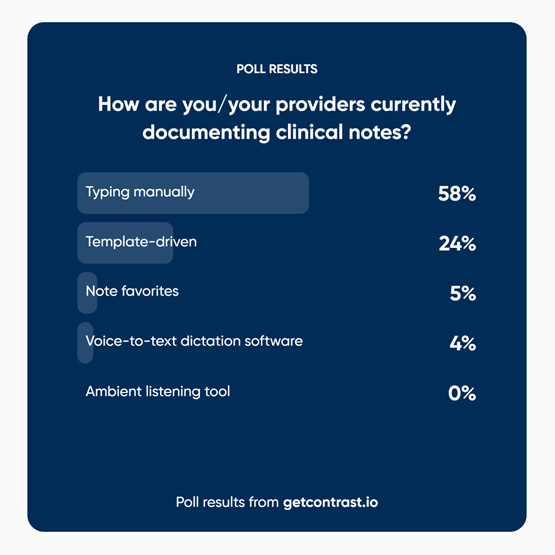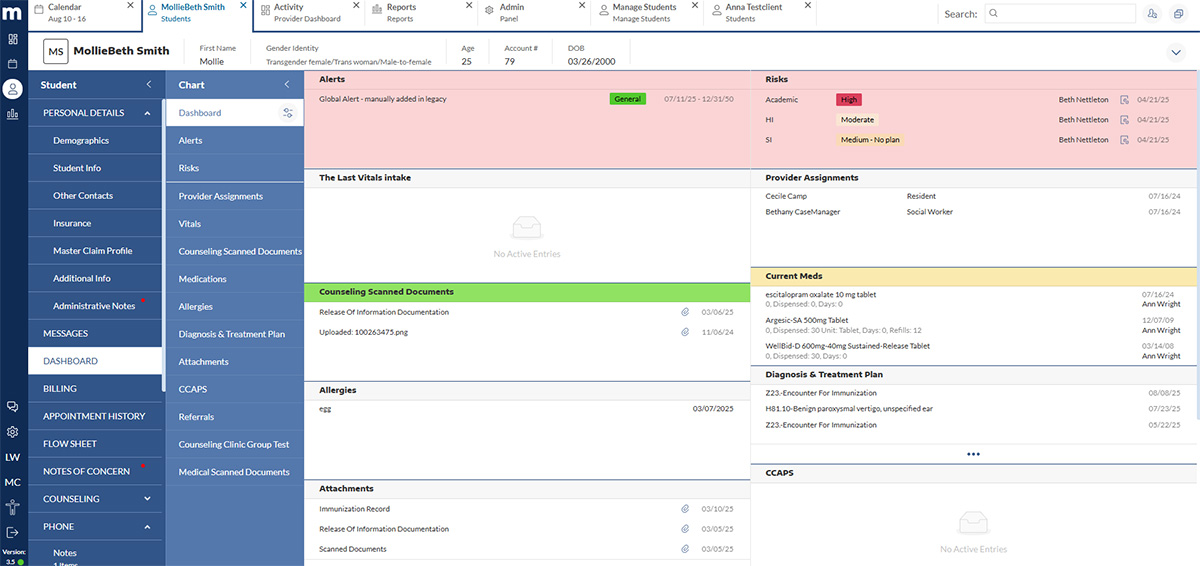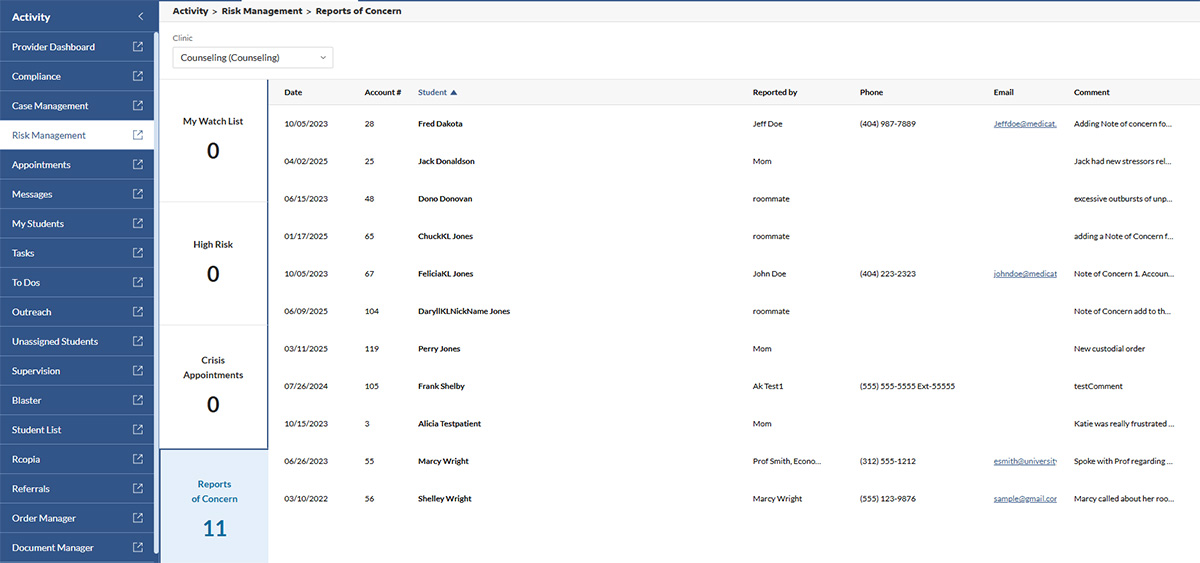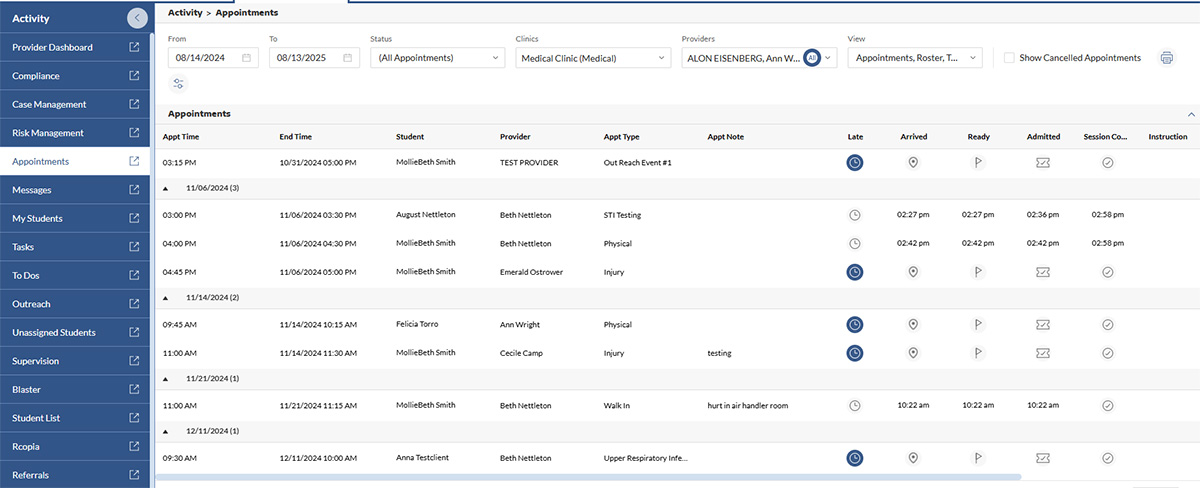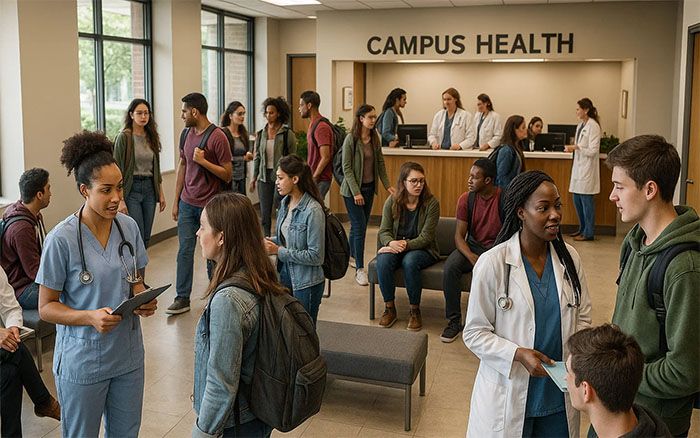Q1: How are campuses trying to increase social connectedness among students?
Dr. Luu: Most campuses are focusing on increasing the promotion of student activities, hosting large social events, and implementing outreach programs. Our Healthy Minds Survey data shows that about 80% of our students report lacking companionship, and 60-70% report feeling left out or isolated from others.
Casey: Students are definitely seeking connection. According to the CCMH report, around 60% of students say they want to connect on campus and gain that sense of belonging. Campuses are responding by increasing the number of events and promoting them through virtual platforms and social media to engage students.
Q2: What lasting impacts has COVID had on student social connection?
Dr. Luu: Even though we’re five years past the start of COVID and it’s much less of a public health threat now, our counseling center data shows nearly 60% of the 4,000+ students we see still report loneliness and isolation as a residual impact of COVID. The pandemic definitely has had a long-lasting effect on young people’s psychological well-being.
Q3: What are the most concerning impacts of social disconnection on campus?
Casey: Isolation is concerning for both mental health providers because it greatly impacts students’ ability to thrive on campus. Our data shows 87% of students can determine the difference between simple connection and a true sense of belonging on campus.
It’s not just about increasing activities but helping students develop social skills to attend events or peer support groups. This directly relates to trauma; 85% of our students report that lack of social connectedness is how they experience their trauma symptomology. Furthermore, the number of students seeking counseling services has dramatically increased, from about 14% before COVID to approximately 40% now.
Q4: What are the most common symptoms of trauma you see related to social skills and connection?
Dr. Luu: We see a decline in academics, but also many disconnected or easily agitated students. Social anxiety has increased significantly. In just the last 5 years, our social anxiety scores among students seeking services have increased by 0.5 points on a 4-point scale.
We also see students withdrawing, experiencing social isolation, and losing interest in activities. It’s like the chicken or the egg issue: Is trauma causing social disconnection, or is social disconnection worsening trauma?
Q5: How do these challenges specifically impact diverse student populations?
Dr. Luu: First-generation students face unique challenges. At the University of Memphis, about 40% of our students are first-gen, and 70-80% of them report loneliness and isolation at the start of therapy.
Financial challenges are significant – students who must work while attending school have less time and energy for campus engagement. First-gen students also lack that “already written roadmap” from family members, making it harder to navigate college life and increasing feelings of isolation.
Student athletes face different but equally challenging barriers. Despite being part of a team, their rigorous academic and practice schedules limit their ability to integrate with the broader campus community.
For LGBTQIA+ students, it can be difficult to identify others in their community. Creating intentional spaces where these students feel safe, seen, and heard is crucial.
Q6: How does your counseling center track student outcomes for those needing higher levels of support?
Dr. Luu: We’re very data-driven. We use a flexible care model, where students can be seen quickly through our walk-in triage system. From there, we collaborate with them to create personalized treatment plans.
We track every step of the counseling process using the CCAPS-62 and CCAPS-34 assessments, which students complete each time they seek services. We review this data weekly in risk management meetings to identify students who may need higher levels of care.
We also collaborate with the Center for Collegiate Mental Health to compare our data longitudinally and against national benchmarks. Our center ranks in the top 5-10% nationally for effectiveness in reducing students’ depression, anxiety, and overall distress.
When we see students whose scores aren’t improving, we know it’s time to change our approach or refer them for specialized care. That’s where partnerships with organizations like HopeNation Campus become valuable – they help address the needs of students with complex trauma who may be outside our scope of practice.
FYI – Did you know Medicat integrates with CCMH? Learn more here.
Q7: How do you provide spaces for students to better connect on campus?
Dr. Luu: Not every student is ready for intense treatment, so we offer multiple options:
- Group therapy programs help students with social anxiety build positive relationships.
- Online peer communities and our Student Wellness Advisory Board, which leads weekly in-person programming.
- Relaxation zones – prevention/intervention spaces where students can drop in without an appointment to use massage chairs, engage with sensory stations, or participate in biofeedback programs. Over 4,000 student visited last year and have been very effective in addressing anxiety and distress.
- Student-led programming that promotes mental health from a public health approach.
Q8: Do students feel hopeful that their sense of belonging can improve?
Casey: We track scientific hope using Snyder’s Hope Scale throughout treatment. Despite trauma experiences, 68% of students come in with very high hope scores (between 45-53). This is impressive because low hope would make developing pathways to social connectedness or academic performance extremely challenging.
Therefore, hope isn’t just a feel-good term – it’s a cognitive tool we can measure and use to drive campus initiatives. First-generation students, for example, tend to have very high scientific hope scores, likely because they know how much is riding on their academic performance.
Dr. Luu: As mental health professionals, instilling hope is crucial to our work. We often talk about “learned helplessness,” but it’s really “learned hopelessness.” The therapeutic process involves helping students unlearn this hopelessness.
Scientifically, hopelessness is one of the two main indicators for suicidality, making hope an essential component of therapy.
Q9: How does HopeNation integrate hope into student treatment?
Casey: We assess students from a hope standpoint rather than just an acuity standpoint. If a student can see, achieve, or even desire wellness, we can help them get there. We use hope scores to determine which students are good candidates for virtual therapy and whether they might need a higher level of care before engaging in treatments like EMDR or brain spotting.
We’ve also created innovative bridge programs with partners like the University of Memphis, where students with increasing hope mixed with some acuity can do virtual sessions within the counseling center, promoting greater support and connectedness.
Q10: How do you address confidentiality concerns when holding group therapy sessions in public spaces like dorms?
Dr. Luu: We have different approaches depending on the structure and purpose of the group:
- For therapy groups like “Tiger Talks” in our residence halls, we treat them as drop-in counseling with strict confidentiality protocols.
- For workshops and more casual sharing spaces, we use a “leave the identity behind” approach – take the lesson with you but leave people’s personal details behind.
- Student-led initiatives like our Relaxation Zone are designed to be welcoming while still maintaining appropriate boundaries.
Casey: What’s innovative about Dr. Luu’s approach is how she engages students in leadership roles. The Relaxation Zone is staffed by student interns, with professional staff providing background support and training to ensure students feel physiologically safe.
Q11: What innovative approaches are you using to meet students where they are?
Dr. Luu: We’ve brought much of our programming to where students already are:
- Workshops in the library called “Less Stress Success” covering relationship management, sleep hygiene, and other topics.
- Mobile “Relaxation Zones” that travel to high-traffic areas during stressful periods like midterms and finals.
P.S. Learn more about bringing peer support to your campus!
Q12: What advice do you have for campuses with limited resources?
Casey: For rural community colleges or campuses with space limitations, virtual options can be incredibly valuable. Virtual check-in apps or virtual peer communities can help maintain connections without requiring physical space.
Dr. Luu: My advice is: data, data, data. Collect not just utilization numbers, but also outcome data and effectiveness metrics. Present this information to administrators to justify funding requests.
Also, don’t be afraid to start small! Our Relaxation Zone began with just one massage chair in a small room, and now we have two large spaces on campus. Collect data, collaborate with other departments, and use research to tell your story better.
Q13: How do you effectively communicate events and opportunities to students?
Dr. Luu: We use multiple platforms:
- A centralized mobile app where students can see all campus events
- Active social media presence
- Student mental health ambassadors who spread the word
- Mental health resource information included in course syllabi
Creating a network of student wellness ambassadors has been particularly effective – they’re our best promoters and bring many peers to events like our recent “Silence the Stigma” program featuring a Silent Disco.
Key Takeaways
Our conversation with Casey Merrill and Dr. Linh Luu highlights a powerful truth: supporting student mental health requires innovative, student-centered approaches. Colleges must prioritize accessible spaces for connection, foster strong peer networks, and consider metrics like hope alongside more traditional data.
By doing so, institutions can reimagine how they address trauma and create a deeper sense of belonging—both key to empowering students for success. These insights offer a clear, hopeful path forward for campuses dedicated to whole-student well-being.
Interested in hearing the full conversation? View the full webinar recording here.


